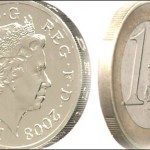Gold traded little changed after touching 3-1/2-month high, as investors weighed the prospects for further Fed stimulus cuts against signs of decreasing physical demand amid the recent rally in prices. Assets in the SPDR Gold Trust, the biggest bullion-backed ETF, were unchanged on Monday, after capping three weeks of advances, the longest run since August.
On the Comex division of the New York Mercantile Exchange, gold futures for settlement in April traded little changed at $1 318.20 per troy ounce by 08:10 GMT, losing 0.02% for the day. Prices touched a session high at $1 329.30 per troy ounce, while day’s low was touched at $1 316.30 an ounce. Yesterday, prices touched $1 332.20 per troy ounce, the strongest level since October 31st.
“The strength is not going to last,” said Dominic Schnider, head of commodities research at UBS AG’s wealth-management unit in Singapore, citing prospects for continued Fed stimulus reductions, a stronger US dollar and restrained inflation. Chinese investors may “pull back a little bit from gold purchases,” amid the recent rally in prices, he added, cited by Bloomberg.
The yellow metal settled last 5-day period 4.1% higher, capping the biggest weekly gain since the period ended August 16. Gold futures are up 9.3% this year after a rout in emerging markets and signs of slowing US growth, boosted demand for haven assets.
However, the precious metal settled last year 28% lower, the steepest annual decline since 1981 as investors lost faith in the metal as a store of value and amid speculation Fed will continue scaling back its monetary stimulus throughout 2014.
Fed stimulus outlook
The Federal Reserve trimmed its monthly bond buying program from $85 billion to $65 billion after two $10 billion cuts. The Fed Chairman Janet Yellen cited the harsh winter and the unseasonably low temperatures as probable reasons for the weaker-than-expected US economic data, as the cold weather has affected activity in the labor market and elsewhere.
The central bank announced its latest decision to reduce monthly monetary stimulus by 10 billion USD to 65 billion USD at the meeting on policy in January, underscoring that labor market indicators, which “were mixed but on balance showed further improvement”, while nation’s economic growth has “picked up in recent quarters.” Fed policymakers are to hold their next meeting on March 18th-19th.
A report by the Federal Reserve revealed on Friday that US factory production decreased in January by the most since May 2009, adding to signs that the recent severe weather conditions weighed on the US economy.
The index of industrial production, which gauges output in US manufacturing, utilities and mining sectors, decreased 0.3% in January compared to December, marking its first monthly drop since July 2013. Experts had anticipated that industrial production will expand 0.2% in January, after it increased 0.3% in December.
The capacity utilization rate in nation’s industry dropped 0.4% to 78.5% in January, while preliminary estimates pointed to a rate of 79.3%.
The US Department of Labor reported on Thursday that the number of people who filed for unemployment benefits for the first time unexpectedly increased to 339 000 in the week ended February 8, while analysts projected the number of initial jobless claims will decline to 330 000 from 331 000 in the previous week.
However, Janet Yellen, in her first testimony to Congress as head of the Fed, said on February 11, the central bank will “likely reduce the pace of asset purchases in further measured steps at future meetings”, if the labor market continues to recover and inflation rises.
Yellen underscored “continuity” in the Federal reserve monetary policy, emphasizing that she strongly approves the approach of her predecessor, Ben Bernanke.
The Fed Chairman also reiterated that the pace of cutting back Fed stimulus was not on a “preset course” and the recovery in the labor market in the US is “far from complete”.
The Federal Reserve will probably continue to pare stimulus by $10 billion at each policy meeting before exiting the program in December, according to a Bloomberg News survey of 41 economists, conducted on January 10th.
Assets in the SPDR Gold Trust, the biggest bullion-backed ETP, were unchanged at 801.25 tons on Monday, after capping three weeks of advances on Friday, the longest run since August. The fund has lost 41% of its holdings in 2013. A total of 553 tons has been withdrawn last year. Billionaire hedge-fund manager John Paulson who holds the biggest stake in the SPDR Gold Trust told clients at the end of last year that he wouldn’t invest more money in his gold fund because it isn’t clear when inflation will accelerate. However, a government report revealed that the owner of the largest stake in the SPDR Gold Trust, kept his holdings unchanged in the fourth quarter of 2013.





